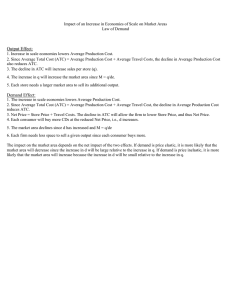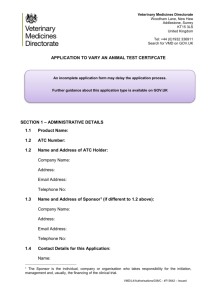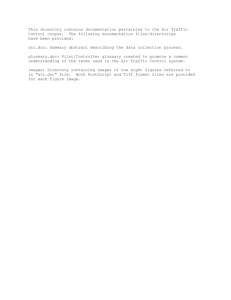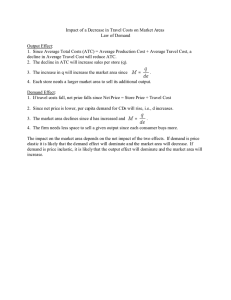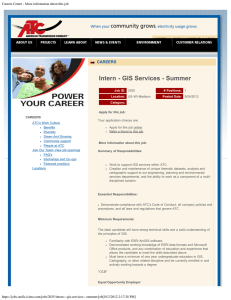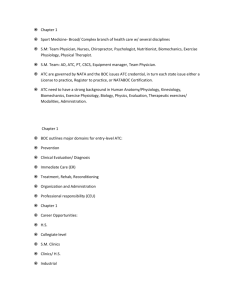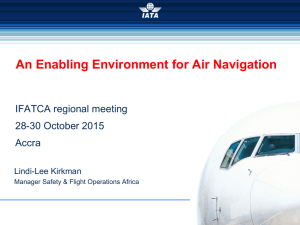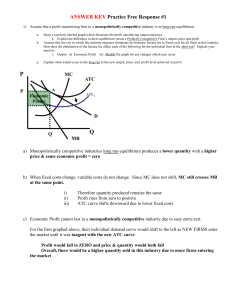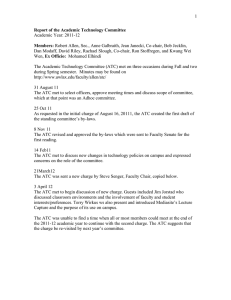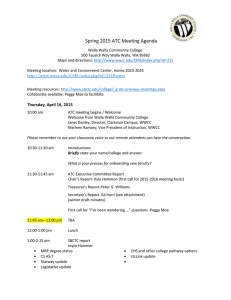Defining the Output of Transmission Companies Harvard Electricity Forum Basic Questions
advertisement
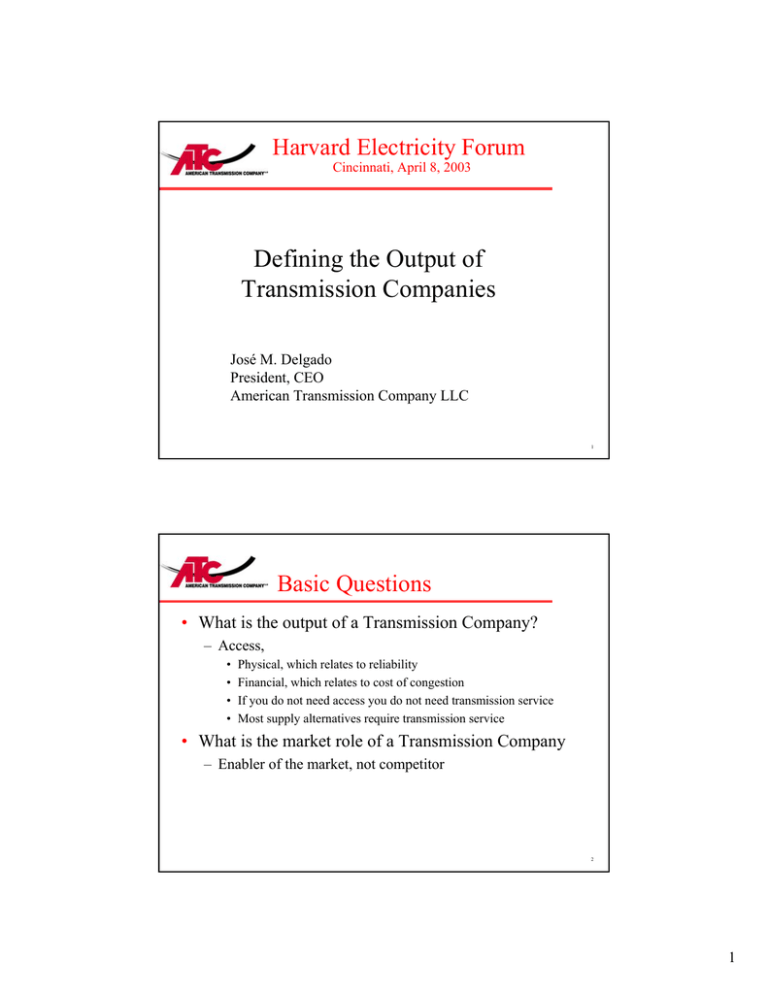
Harvard Electricity Forum Cincinnati, April 8, 2003 Defining the Output of Transmission Companies José M. Delgado President, CEO American Transmission Company LLC 1 Basic Questions • What is the output of a Transmission Company? – Access, • • • • Physical, which relates to reliability Financial, which relates to cost of congestion If you do not need access you do not need transmission service Most supply alternatives require transmission service • What is the market role of a Transmission Company – Enabler of the market, not competitor 2 1 What is ATC? • A Public Utility – A regulated monopoly that implements public policy with the obligation to serve – Holder of a public-interest mandate to provide the transmission services needed in the area it serves • An infrastructure company – Engaged solely in electric transmission – Owns, maintains, operates, plans and builds transmission assets to meet customer needs – Seeks to earn a regulated return on investment commensurate with its business risks 3 Can ATC build the needed transmission? Are incentives needed? No, instead need: – Customer, regulator and public support – Strong cash flow, adequate earnings, manageable risks – Strong financial ratios, high credit ratings, low costs of money, high investor interest • Does not need incentives to apply good utility practices – New technology, materials and methods – Reduced costs of redispatch and TLRs • ATC lacks internal disincentives to build! • FERC incentives( ie. candy) is not the basis for a stable business – The FERC giveth and the FERC taketh away 4 2 ATC Financial Profile • January 1, 2001: • January 1, 2003: – $550m net assets – $173m Revenue Rqmt. – $700m net assets – $211m Revenue Rqmt. • Historical test year • Projected test year – First year true-up – Annual true-up • 12.2% ROE • 2001 actual – – – – • 12.2% ROE • 2003 projected Net income $50m Cash from Ops $80m Dividends $27m (3 qtrs) Capex $80m – – – – • Ratings Net income $61m Cash from Ops $100m Dividends $48m (4 qtrs) Capex $200m • Ratings – Long term: A1,A-,A – Com’l Paper: P1,A2,F1 – Long term: A1,A,A – Com’l Paper: P1,A1,F1 5 ATC Planned vs. Historic Investments Net Capital Investments $2,500 Net Transmission Investment ($M) $2,000 $1,500 $1,000 ATC $500 Participating Utilities $1988 1989 1990 1991 1992 1993 1994 1995 1996 1997 1998 1999 2000 2001 2002 2003 2004 2005 2006 2007 2008 2009 2010 6 3 ATC cannot build too much transmission, because: • Transmission projects must be justified based on need in very public and contentious processes – Transmission projects are very easy to stop or interminably delayed, which is the same – Significant roadblocks for what is needed let alone what is not needed • Cannot compete against alternative ways of meeting the same needs (generation or demand side programs), if any – It takes many times longer to build transmission than any of the alternatives • Failure of a major construction project represents a significant threat to the viability of a transmission company • What is too much transmission? 7 Performance-based rates • Is there a risk we can manage better than the customer? • Will the customers support the incentive service? • Can we keep the money if we manage it right? • Lack of regulatory tradition of incentive rates in the US 8 4 Metrics of transmission outputs • Traditional metrics are not adequate – CAIDI, SAIDI, outage hours, costs of maintenance • Metrics should reflect impacts on the transmission customer such as: – Ability to plan, license and build (in a timely and economic basis) to meet the needs and objectives of its customers – Reduced customer opportunity loss due to lack of access to the regional electricity market – Reduced Redispatch costs / Congestion costs / System energy losses 9 5

